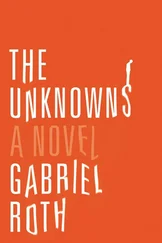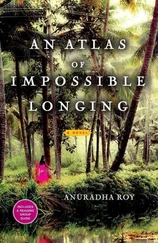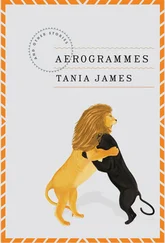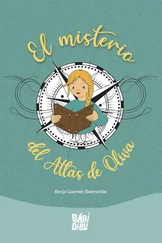The invitation shop is easy to overlook, wedged between a tailor shop and a hardware store. Gently, Linno pushes open the door, which tinkles at her entry.
From the back of the narrow room, Alice welcomes Linno by waving a wand of incense, attempting to slice through the sweet, mulchy smell of old paper. A slender rope of smoke dissolves toward the ceiling. Linno tries not to wonder which beam Reji chose.
After nodding hello to Prince and Bhanu, Linno follows Alice to the back room. One wall holds shelves of mill paper, each color split into a small spectrum of its own. Within the color white, there is ivory, lily, butter, and shell. Linno’s gaze travels up and down the columns of tint and shade, as unable to focus as when she first entered Thresia Paint House. For Rachna’s invitation, Linno decides on navy blue and rust red.
Alice seats Linno at a card table, before a set of tools arranged on a napkin, as if for a surgeon — a pencil, an eraser, scissors, glue, and various pens, a few that produce metallic ink and one tipped with a sharp, thin blade. Linno hunches over the table for twenty minutes, re-creating what she designed at home, while Alice pushes a mop between the benches. “Take your time,” Alice says, but Linno needs very little, having struggled enough over the past few nights. The paper had seemed so stubborn then, impossible to shape, and the overall process of creation was as confusing as finding her way out of a maze. But now that she knows the route, it is easy to repeat.
When she is finished, Linno fans the ink on a design that is simpler than her previous plan. The card is multilayered, with the outline of a butterfly cut into the navy cover to unearth the red layer beneath, stroked with gold arabesques. Upon opening, a red butterfly springs from the gutter of the card, the paper edges whispering against each other as the wings spread wide. Beneath the butterfly are two small flaps where information and RSVP cards will be kept.
She feels a light punch at her shoulder. Alice is standing over her, beaming. “Who taught you this?” she asks, taking the card into her hands. She opens and closes it, childlike with wonder.
The very same day, Alice posts the template to Rachna’s mother, along with a fixed price of $4 per card. Linno doubts that Mrs. Nair will agree to such a price, but by the end of the week Alice has good news. Not only did Rachna request 150 invitations, but 300 place cards, a whole battalion of navy and rust red butterflies.
ALICE TAKES THE BLUE PAGES to the production house, where the die cutting machine can quickly carve the butterfly mosaic into the covers and the Baby Heidelberg can fold them. In the meantime, Linno cuts the parts for the inner butterfly and shows Alice how to fit the wings together.
At first, they work in silence. Each butterfly has a personality of its own, and Linno feels a certain kinship with this early flock, which are clumsier in ways that only she can recognize. Gradually, her fingers learn to move without thought.
So far, Alice has refrained from the topic of Kuku, for which Linno is quietly grateful. Instead, Alice rambles about her favorite topic — foreigners — who have been sighted in increasing numbers throughout Kerala. Foreigners are excellent for business, she says, and their presence necessitates an interior overhaul of the office. No more tinsel and streamers, but strictly Raja Ravi Varma prints, those paintings with the plumpish, pleasant Malayali women playing veenas or holding ripe-bellied children to their hips. Around the clock, Ravi Shankar will whine softly from hidden speakers. The sign over the doorway will have to be fashioned anew, made to hearken after the royal mystique of Rajput kings, another task for which Linno is suited. A sign, if properly seductive, can net a whole school of foreigners.
Alice pronounces the word “foreigner” using the loving, hungry tones with which she talks of sweet kulfi. But Ammachi views them as an invasive hoard, questing with the same plundering spirit as their ancestors of centuries prior.
“They are mostly tourists,” Linno argued with her. “They’re not staying. They’re not claiming anything.”
“Oh no?” Ammachi pointed out the new billboards for Kalyan Silks, all of which featured a regal blond woman in a sari. “Hundreds of pretty girls here and this is who Kalyan chose as a model?”
There is no denying the presence of foreigners, the houseboats carrying women in airy kurta tops and jeans, tall, rangy men in Velcro sandals and elaborate backpacks, or older couples with visors and fragile crowns of silver hair, blinking away the river’s glare behind insectile shades. The tourists seem either wary or ignorant of all the stares they draw, but their normal behaviors take on an odd exoticism — smoking, sneezing, strolling along. What they do not do is just as intriguing as what they do. For example: Why do they refuse to walk beneath an open umbrella on brutally sunny days?
“You know, it’s rude to stare,” an American woman once said to Linno. The woman must have been in her thirties, too old to be wearing her hair in those pigtails. Vulnerable blue veins branched along the insides of her wrists.
Linno wanted to come up with a sharp retort, but she was astonished that the tourist had addressed her at all, and pleased, almost gratified that the tourist had found Linno’s home worthy of invasion. She saw no inconsistency in her position. Like most Keralites, she denounced the American president, American imperialism, and ate vanilla pistachio ice cream at the Ernakulam Baskin-Robbins all the same. Thirty-one flavors and the Coffee Coolatta! No ice-cream parlor, not even Vemby’s, could rival it.
WHEN LINNO AND ANJU were little girls, their favorite game was called Tourists, in which they dressed up in castoffs that they had found in Ammachi’s closet. Anju went about the house wearing her plastic shamrock glasses with the green lenses, her head turbanned in Ammachi’s massive brassiere. A pair of pants served as Linno’s cape, the ankles tied at her throat. Their names were Linda and Angel. Together they roamed from room to room, clicking pictures with imaginary cameras, shading their eyes, cooing over their found souvenirs, usually ashtrays and pencils and empty coffee tins.
From Ammachi’s closet, Angel plundered a thing more valuable than any brassiere-turban. It was some sort of hat, big as a melon, ruby red with glitter, balding in patches. Angel coronated herself before her only rival could object.
At that moment, Melvin entered the room and asked if the girls had seen the iron. They were used to these tiny punctures in their Tourist fantasy and found it easy to recover their world from intruders. But this time, Melvin stayed even after Linno said that the iron was on the ironing board. Melvin was staring at Anju, who stared back from under the big red hat.
“Where did you get that?” he asked in a strange voice.
Anju put her hands on the hat. “Can I have it?”
In two strides, Melvin plucked the hat from her head. Anju looked like she might cry. “But that’s mine!”
“Don’t take things that do not belong to you,” he said.
It was hard for Linno to picture how and why the big red hat belonged to her father. It matched none of his clothes. He had no interest in joining the Tourists. In their pant-cape and brassiere-turban, Linno and Anju pondered Melvin as if he were a perplexing native whose customs they did not understand. Melvin shifted his feet.
“Go study,” he told them, which was what he told them whenever he didn’t know what else to say. Big red hat in hand, he left the room.
 N ANJU’S OPINION, Rohit suffers from an addiction to his camera. He brings it everywhere, phobic to the possibility that a witty remark might be made or a crisis might occur at the exact moment when his hands are empty. His addiction makes every banality precious and worth filming, the tying of a shoe freighted with meaning when viewed through the lens.
N ANJU’S OPINION, Rohit suffers from an addiction to his camera. He brings it everywhere, phobic to the possibility that a witty remark might be made or a crisis might occur at the exact moment when his hands are empty. His addiction makes every banality precious and worth filming, the tying of a shoe freighted with meaning when viewed through the lens.
Читать дальше
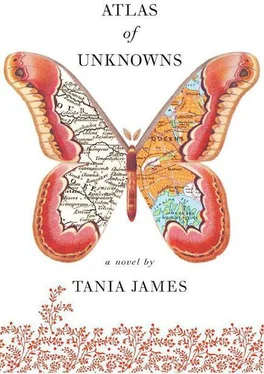
 N ANJU’S OPINION, Rohit suffers from an addiction to his camera. He brings it everywhere, phobic to the possibility that a witty remark might be made or a crisis might occur at the exact moment when his hands are empty. His addiction makes every banality precious and worth filming, the tying of a shoe freighted with meaning when viewed through the lens.
N ANJU’S OPINION, Rohit suffers from an addiction to his camera. He brings it everywhere, phobic to the possibility that a witty remark might be made or a crisis might occur at the exact moment when his hands are empty. His addiction makes every banality precious and worth filming, the tying of a shoe freighted with meaning when viewed through the lens.